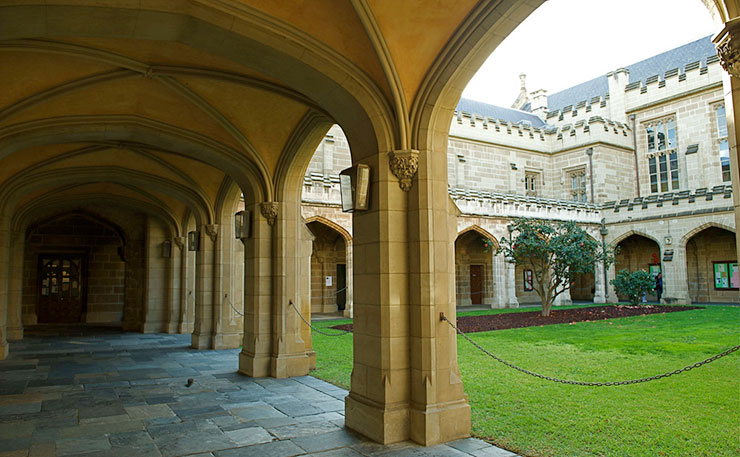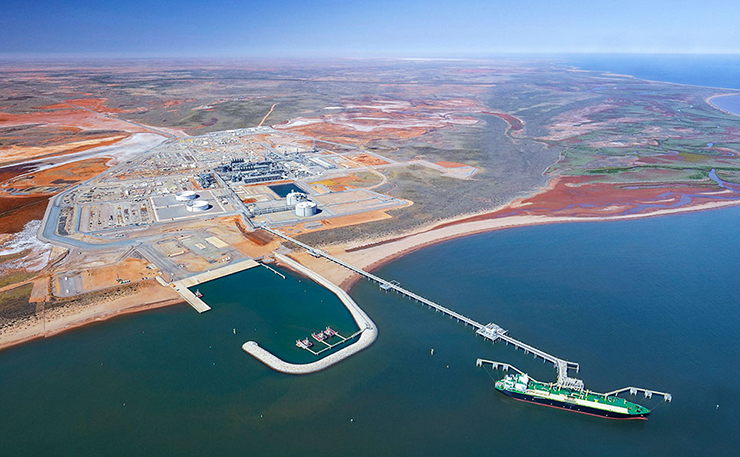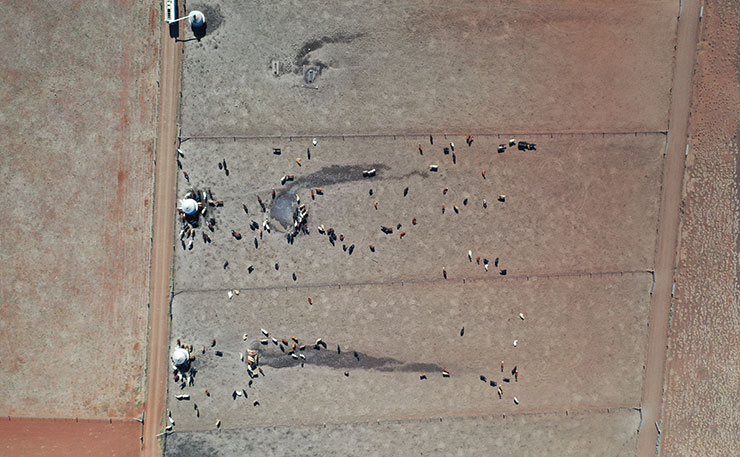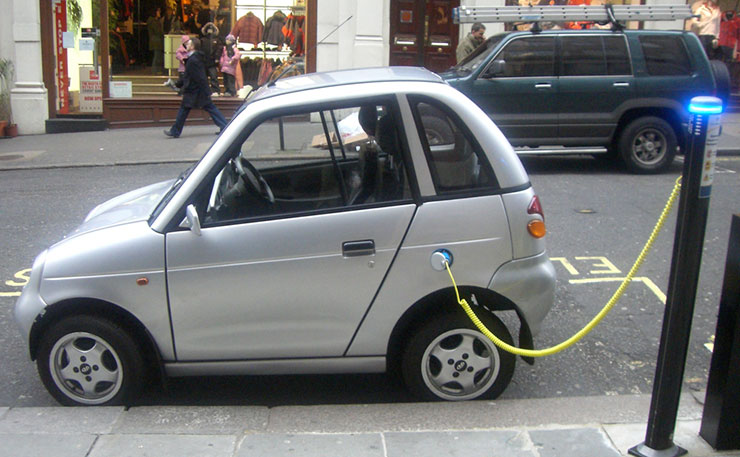Australia’s path to ‘net zero’ emissions isn’t so much rocky as it breathtakingly foolish. That is unless we’re all okay with wide-scale habitat destruction both here and overseas) while wasting trillions of dollars in the process. Geoff Russell weighs in on the ‘renewables vs nuclear’ debate, which seems to be going from the ‘bizarre to the absurdum’.
Mathematicians often use a form of proof called “Reductio ad absurdum”. If you want to prove something is false, then assume it’s true and see what that implies. If the implication is false or contrary to something we know is true, then the job is done.
Here’s an example. Suppose Jill and Joe are having a discussion. Joe believes in the power of prayer and Jill wants to prove that praying for something doesn’t work.
JOE: “If I pray, then I can pass my exam.”
Jill assumes prayer works and so tries to see what that implies.
JILL: “If prayer works, then few, if any Christians would ever have died from cancer.”
That’s true if most Christians with a cancer diagnosis respond by praying not to die (from the cancer).
Jill: “So, since many Christians die of cancer (every day), prayer doesn’t work.”
There’s a bit of slack in that argument. Maybe Christians don’t all take to prayer when given a cancer diagnosis, and maybe some die without being diagnosed. A mathematician doing mathematics would be more rigorous, but Reductio arguments are often used in this rough and ready way.
Of course, you can escape the argument by exploiting a common loop hole.
Joe: “Prayer definitely works, just not all the time and only if you are devout.”
Enter Net Zero Australia.
Best laid plans
All over the world, research groups are producing net-zero plans of one kind or another. The latest local work came out in April 2023, from Net Zero Australia (NZAU).
NZAU is a consortium of universities and consulting companies, with most of the people being from Melbourne University.

It has produced a report (summary here, full results here) which I reckon is a pretty good Reductio ad absurdum argument against a renewable path to net zero. Based on a bunch of reasonable sounding assumptions it produces a net zero solution which not only sucks, but looks incredibly unlikely. The implication is that the main assumption – renewables are the only game in town – needs to be modified or simply binned.
But like Joe, the NZAU authors probably have a few loop holes to clamber through.
NZAU, assuming a renewable future, comes up with a plan that will cost $189-$243 billion dollars… each and every year through to 2060 (that’s a total of between $7-9 trillion dollars).
Because of the short life span of renewables, by the time we get to 2060, everything we built in the current decade will be ready for trashing, or perhaps recycling, so we can expect that expenditure to continue. Forever. Recycling will be expensive because there will be hundreds of millions of tonnes of stuff spread over a massive area.
If that’s the cost of a renewable-heavy solution, then I’d call NZAU a great reductio proof that the assumptions are wrong. Meaning that we should explore alternative decarbonisation pathways. Alternatively, if renewables are the only option, then the unlikely nature of the solution might just prove we are toast.
The report has a set of scenarios, but I’ll focus on the thrust of the solutions relative to the ‘business as usual’ scenario.
The report envisages 400-500 gigawatt (GW) of renewables replacing 25 GW of fossil fuels with the potential for “several thousand GW producing energy exports” in northern Australia, and yet more potential for thousands more GW down south. I’ll ignore that additional potential.
Look at the 400-500 GW figure and the 25 GW figure. Is NZAU saying we need 16 GW of renewables to replace each single GW of fossil fuels? Not quite. They are envisaging a rising population and the need to charge EVs and replace gas for home heating.
So what are the “several thousand GW” for? They’ll be in northern Australia to replace our exported fossil fuels. We’ll become a “renewable energy superpower”, in the words of Chris Bowen, and not a “nuclear backwater” like China, South Korea, India, the US, France, Japan, Canada and all the other dummies.
A massive renewable energy project, the Asian Renewable Energy Hub (AREH), was blocked on environmental grounds back in 2021. It was, relative to “several thousand GW”, a tiny renewable energy project in Western Australia but I called it massive because its project area was 666,000 hectares [Ed’s note: more than two ‘Adelaides’ combined]. And all for 26 GW of energy.
If environmental impacts stopped 26 GW, how will anybody build “several thousand” gigawatts?

Moving mammals
Back in 2019, the Wheatstone Liquified Natural Gas (LNG) project in WA (not far from the proposed AREH) moved 30,000 animals from their project site over a period of seven years. How big was that site? 1,000 hectares. Juggle those numbers around in your head until they knock you sideways.
If projects involving several thousand GW were to be built in northern Australia, then how many animals would need to be moved? More than likely none. I’d be guessing they are banking on just bulldozing the site(s), Bjelke-Peterson style.
But let’s work it out anyway. Let’s assume the “several” in the phrase “several thousand” is at least ‘three’. So how big is 3,000 GW relative to the abandoned AREH proposal? It’s about 115 times bigger. Now let’s ignore the wind turbines… who needs bats and birds anyway? So if we just focus on the solar component alone, we can scale up the AREH values. AREH was going to clear 20,000 hectares, so we can assume 3,000 GW of projects would clear about 115 x 20,000… which equals 2.3 million hectares. [Ed’s note: That equates to more than two-thirds of the remaining forested land in Tasmania (about 3.35 million hectares)… or about seven ‘Adelaides’.]
As for the animals, assuming they were as environmentally conscious as the managers of Wheatstone, then they’d also be up for moving about 69 million animals, over some considerable time. Wheatstone could afford that time and expense of moving critters because of the small size of the site. Nuclear power plant sites are even smaller again.
Clearly the NZAU people didn’t talk to any of the biodiversity experts at their various institutions. They had a large advisory group whom they circulated assumptions and scenario details to, but sometimes people don’t think hard about assumptions until they see the results and understand the implications. There’s that Reductio methodology again.
We can be surprised, shocked, or appalled at the results that benign sounding assumptions yield. “Several thousand GW” sounds great until you turn it into something concrete like how many hectares need to be bulldozed to get there.
Offsetting and sequestration
NZAU is a “whole of economy” scenario; except that it isn’t. Instead of cleaning up things like steel and cement production by using new processes, it proposes carbon sequestration to offset emissions. Similarly for aviation. Although to be fair I doubt anybody thinks aviation can be cleaned up, it will need offsetting for a considerable period.
NZAU also proposes handling cattle methane with feed additives to reduce emissions and offsetting the rest via 5.1 million hectares of new plantings, providing a 51 million tonne/year sink.
This makes no sense at all. Australia’s [United Nations Framework Convention on Climate Change](https://unfccc.int/) (UNFCCC) Inventory for 2022 puts enteric fermentation emissions [Ed’s note: animal burps] at 1.85 million tonnes. Just four per cent of this is from feedlot cattle, which can be reduced by feed additives. Over the next 20 years, this methane will have a warming impact of about 142 million tonnes of carbon dioxide; and that’s a low estimate without considering indirect impacts. Offsetting only 51 million tonnes with tree plantings suggests NZAU has prioritized a love of BBQs over climate impacts.

Feed additives for cattle to reduce methane have been hyped for at least 40 years and gone nowhere, mostly because the rumen tends to resist changes to what millions of years of evolution have produced. So additives that work in the short run, fail to work over the long term.
Whether this happens with seaweed, the current new-kid on the cattle feed-additive block remains to be seen, but other problems with scaling what works in the lab are emerging, namely human safety issues for handling this seaweed (sparagopsis). Chemicals in the seaweed are both highly volatile as well as toxic; not to mention being a probable carcinogen.
This isn’t too much of an issue with small amounts and skilled researchers, but may be a problem at scale. Worrying about a carcinogen in feed when producing red meat, which causes thousands of bowel cancers annually in Australia, is a little like a smoker being worried about chemicals in shampoo.
Supply chain blindness
You won’t find the words copper, nickel, cobalt, graphite or rare earths in the NZAU study. There is nothing at all about the supply chains which this renewable heavy study assumes will be able to spring into action. The assumption is clear, if we want to do something, like clear millions of hectares of northern Australia for several thousand GW of renewable energy, and want to build something, like a million of tonnes of photovoltaic (PV) panels and wind turbines and batteries, then the mines will magically appear to make it so.
The world’s 10 biggest copper mines have an average age of 64, which means they are working with lower grade ores, making for more tailings per tonne. Copper demand is rising and EVs need triple the amount used in petrol vehicles. Aluminium was recently added to the EU critical minerals list, with production dropping sharply since 2017. Australia produced 1.9 million tonnes of aluminium in 2011 and 1.5 million in 2021.
Somehow NZAU seems to think that a $7-9 trillion energy revamp which also grows a workforce from 100,000 to 800,000 will produce electricity at a cost that will make aluminium profitable? And since when will it be a “skilled” workforce?
The solar cell and battery supply chains are deeply rooted in China. Our energy industry is mostly just a lego industry. Assemble what we can buy by exporting raw materials. Will the recent deal with Indonesia on nickel for batteries help? We have the lithium, but we are starting from the back of the pack. And will the public accept a deal when they realise the cost to Indonesian rainforests? Although if they accept several thousand GW of renewables in northern Australia, then the answer is probably yes!
Technology neutral
The NZAU study reckons it is technology neutral. That’s so false that it needs to be called for what it is: pure bullshit.
One of the goals of the study is to replace our exports of fossil fuels with clean alternatives. That’s part of the reason for the scenario with several thousand GW in Northern Australia. So what about uranium? It is ignored. Unlike the authors of this study, none of Australia’s trading partners are anti-nuclear. China, South Korea, and Japan all have reactors, and we have uranium.
Only a technically partisan anti-nuclear study would fail to see this as the most efficient way to export energy. I’ll give some figures later. But the bias against nuclear gets worse as you dig deeper. Hence my label of bullshit.

NZAU put a price on nuclear reactors of about $7 billion per GW. That’s not too bad, but given we have a climate crisis to deal with, wouldn’t we expect that somebody might realistically work out how to make reactors quickly and cheaply? Speed shouldn’t be a problem. The Japanese built their fleet of 60 reactors in an average build time of 4 years; so it’s clearly not impossible. The Carbon Free Europe report has a similar job to the NZAU, but for Europe, obviously. It has a scenario called “Nuclear Breakthrough” to capture just such a prospect in addition to a “No new nuclear” scenario. That’s the kind of thing you’d do if you were genuinely technology neutral rather than just pretending (aka lying).
There are a few kinds of nuclear scenarios that make sense; the “breakthrough” scenario is just one. A more radical scenario might assume climate change was taken seriously enough to regulate nuclear power like we regulate other big potentially dangerous things; like aircraft. Let’s briefly take a little detour.
Big things
Aircraft sometimes crash and kill hundreds of people and have been doing so regularly for decades. Nuclear reactors have never done this. And yet you can build a plane and test fly it all over the planet without spending even a single day getting your design approved. Safety approvals for commercial operation are obtained by real world testing; a much more reliable method than trying to inspect a design on paper.
ThorCon, a US Company now working to bring nuclear power to Indonesia, reckon they can build reactors for roughly a billion dollars a GW, by using shipyard construction methods. One of the principles has a background in these methods. Maybe they’ll fail to meet that target, but what they should be able to do is bust the mystique surrounding the technology. Nuclear reactors are certainly complex, but engineers build many far more complex things in far less time. As I said above, the Japanese managed to build their 60 reactors in an average of 4 years each; South Korea in about 5, other countries like France, Germany and China in about 6. The US is the outlier with a mean of 8.2 years per reactor. When Australians talk down nuclear build times they always seem to ignore the Japanese and South Koreans.
Why can the US build planes perfectly well while being totally rubbish at building reactors? Most of the secret to the US failure is the NRC, the Nuclear Regulatory Commission. The analogy with the so-called “technology neutral” NZAU report is straight forward. NZAU pretends to be technology neutral while being transparently anti-nuclear, ditto the NRC.
End of detour!
The real cost
Let’s accept the NZAU $7 billion a GW figure for nuclear. Most NZAU scenarios aim to expand Australia’s primary energy to 34 exajoules/year by 2060. An exajoule is a really huge unit of energy and its usually used when you want to include heat and electricity together. To get an idea of how big it is, about 30 of the 34 exajoules are for export energy and 4 for domestic purposes; not all the scenarios are quite that big the main ones are.
How many nuclear reactors do you need to generate 34 exajoules? Assuming 1 GW reactors, you’d need about 410. That’s 50 for domestic energy, and 360 for export energy.
That’s a lot of reactors! Reactors use far less materials than renewables to build and, for the most part, simpler materials; and you don’t need batteries or a total grid rebuild and expansion.
At $7 billion each, we’d be up for $350 billion for the 50 domestic reactors and about $2.5 trillion for the rest. That’s not the full picture, but we save resources all along the supply chains back to the mines; we need to clear less rainforest in Indonesia for nickel, for example. How on earth could we fritter away enough money on the rest of what we need to exceed the NZAU’s $7 trillion lower bound? Remember we don’t need storage or an expanded grid. We could, assuming we began managing anti-nuclear lies the same way we managed anti-vax lies during Covid19, just position most of the reactors on existing coal sites.
As for the export energy, how many of the 360 reactors we’d need would depend on how much uranium we could produce. As I said earlier, by far the best way to export energy is as uranium. So we can save a couple of trillion dollars by not building the 360 reactors and just sticking with 50; and put the effort into uranium non-mines.
What’s a non-mine? About two-thirds of the world’s uranium is produced with no mines at all.
Having our cake…
How do we match existing energy exports optimally? It’s not complicated. We exported 75 million tonnes of LNG in 2019; that’s about 1,300 voyages of some really big ships. Alternatively, we could have exported 9,400 tonnes of uranium [Ed’s note: On one ship!]. Like I said, assuming we can find the uranium, why bother building several thousand GW of habitat-trashing wind and solar farms when we can just export uranium?
How can you be technology neutral when one technology is so much more efficient and ecologically benign compared to another? It’s like being technology neutral between getting your teeth pulled with and without anaesthetic.
So how much uranium do we have? And how many fast neutron reactors will the Chinese be building in the next 30 years? These questions are intimately related because fast reactors get tens of times (50-100) more energy out of each tonne of uranium. The Chinese think a long way ahead, that’s why we are scrambling to talk about critical minerals. They’ve been a decade ahead for at least a decade. Their nuclear future includes plans to optimise uranium use by constant recycling, and also using fast reactors which can run on waste from current reactors.
“Technology neutral” in the NZAU case is really just code for “Nuclear, uh? what’s that?”.
Yet more bias
The biggest bias in NZAU is its claim to have considered nuclear power as part of its sensitivity analysis. This involves, as far as I can see, swapping nuclear power plants for renewable plants in a system designed for renewables and bloated with all the stuff that nuclear plants don’t need; like batteries and a redesigned and totally rebuilt grid.
Here’s another explanation that might make this clear. The reason modellers use scenarios is that it is usually impossible to optimise ‘costs over system’ built under different policies. Suppose for example, you live V2G (Vehicle to Grid). This is where you use batteries in people cars to store energy for the grid. To do this requires more copper and aluminium.

You need thicker wires to handle the large quantities of electricity that 1,000 cars in a small area can pump out. Having made that assumption, you’ll find ‘big’ grid scale batteries aren’t cost effective and more, because you’ll hardly ever need them. You can’t compare grid batteries and V2G without different scenarios.
Likewise, if you want to model nuclear, it will need at least one purpose-built scenario. NZAU had a cast of thousands; over 30 + advisory groups. Despite this large team, nobody seemed to think about the habit destruction and biodiversity losses implied by thousands of GW in northern Australia, and nobody seemed to realise that nuclear is different and needs its own scenario(s).
At $7-9 trillion, the NZAU plan demonstrates one thing really well, namely that the renewable pathway isn’t so much a pathway as a very expensive planet trashing highway. We need an alternative, far eco-friendlier decarbonisation route. Lucky we already have one.
Donate To New Matilda
New Matilda is a small, independent media outlet. We survive through reader contributions, and never losing a lawsuit. If you got something from this article, giving something back helps us to continue speaking truth to power. Every little bit counts.




